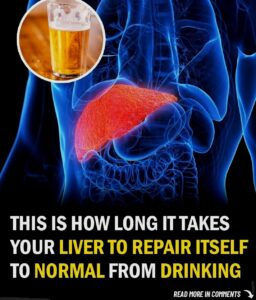How Long It Really Takes Your Liver to Bounce Back After You Stop Drinking

The liver is a quiet powerhouse working tirelessly behind the scenes. It handles over 500 essential jobs—cleansing your system, storing energy, and keeping your blood clotting properly. But when alcohol enters your system, your liver drops everything to manage this new, toxic priority. Over time, this constant pressure wears it down. The good news? The liver is incredibly resilient. Once you give it a break, it gets to work healing itself almost immediately.
The First 24 Hours: The Detox Begins
Just hours after your last drink, your liver starts breathing easier. Without alcohol to filter out, it finally shifts gears from crisis mode to recovery. Inflammation markers begin to fall, blood flow improves, and your liver starts doing what it does best—maintaining balance in your body. You might not notice a huge difference yet, but deep inside, your body is already transitioning into healing mode.
By One Week: Major Internal Shifts
Within seven days of quitting alcohol, many people feel a real change. For one, sleep usually becomes deeper and more consistent. That’s because your liver no longer disrupts your sleep cycles trying to process toxins. Your body also begins managing blood sugar better, leading to steadier energy. Bloating and digestive troubles may ease as your digestive system recalibrates.
Two Weeks: Clearing Out the Fat
At the two-week mark, signs of fatty liver—a common result of regular drinking—may start to reverse. The liver begins metabolizing fats more efficiently, clearing out excess fat deposits. You might not feel this shift immediately, but your lab work will likely reflect it. Liver enzymes such as ALT and AST often begin trending back toward normal, signaling the liver is healing at the cellular level.
One Month: A Noticeable Transformation
By 30 days, you’ll likely feel like a new version of yourself. Any swelling in your liver may have gone down, and your blood work could show significant improvement. Mental fog often clears, and you may find your mood lifting. The liver now has the bandwidth to produce proteins that support your immune system and regulate inflammation. Many report stronger immunity and better digestion around this time.
Three Months: The Liver Levels Up
At 90 days alcohol-free, you enter a new phase of recovery. Your liver’s ability to regenerate tissue becomes more noticeable. Skin often appears healthier and more radiant, and energy levels continue to rise. If you’ve been exercising, you may notice better muscle recovery and endurance. Internally, your liver is approaching its peak healing pace—rebuilding tissue, balancing hormones, and helping your body function optimally.
Six to Twelve Months: Deep Repair Sets In
During this longer stretch, repair slows down but continues steadily. While some scarring may never fully heal, your liver can still adapt and improve its performance. Risks for serious conditions like cirrhosis drop substantially. Many find their tolerance for alcohol has changed dramatically—just a small amount can feel overwhelming. This period is about sustained healing and long-term health gains.
What Influences Your Liver’s Recovery Time?
The healing journey depends on a few key factors:
-
Drinking history: Regular heavy use takes a greater toll than occasional drinking.
-
How long you drank: A few months of drinking won’t leave the same damage as years of it.
-
Your age: Younger people often recover faster, though older adults can also heal well.
-
Overall health: Diet, exercise, and other medical conditions all play a part.
No matter your background, your liver begins to repair itself as soon as you stop drinking.
Your Body’s Signals That Healing Is Happening
Recovery isn’t always visible, but your body leaves clues:
-
Better, more restful sleep
-
Stable energy throughout the day
-
Clearer skin and less bloating
-
Improved focus and emotional balance
These signs mean your liver is successfully returning to its natural rhythm.
When Damage Is Severe—But Not Hopeless
Even if alcohol has caused significant harm, there’s still hope. Advanced liver damage can be managed, and sobriety can prevent things from getting worse. While scar tissue may not fully disappear, quitting alcohol gives your liver the best chance to function well with what healthy tissue remains.
The bottom line? Your liver’s capacity to heal is remarkable. Every alcohol-free day is a step toward recovery, no matter where you’re starting from.